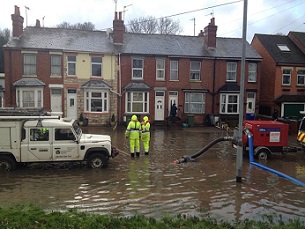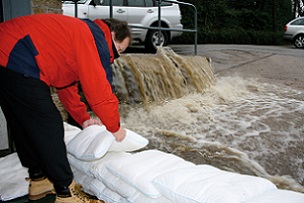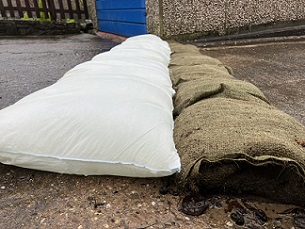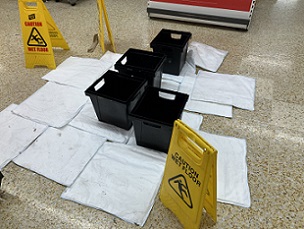 The Environment Agency says flooding will only get worse in the future
The Environment Agency says flooding will only get worse in the future
 FloodSax alternative sandbags are strong and robust to keep torrential floodwater out of homes and businesses
FloodSax alternative sandbags are strong and robust to keep torrential floodwater out of homes and businesses
 FloodSax sandless sandbags are way better than old-style sandbags in lots of ways
FloodSax sandless sandbags are way better than old-style sandbags in lots of ways
 FloodSax soak up leaks, spills and internal floods so are vital for health and safety
FloodSax soak up leaks, spills and internal floods so are vital for health and safety
October 2023 saw wettest period in UK since 1891 … and the Environment Agency says it will only get worse
Storm Babet in October 2023 was the third wettest three-day period for England and Wales in more than 130 years, flooding over 2,000 homes.
More rain fell between October 18 and 21 during this storm than at any time since 1891, according to the Met Office … and it was then quickly followed by a further deluge from Storm Ciaran.
The Midlands recorded its wettest ever three-day period.
Ironically this week (Nov 20-26, 2023) is Flood Action Week … not that anyone would need reminding about the cost, misery and danger of flooding after such a horrendously wet last couple of months.
The Government has just revealed that 2,100 properties were flooded across the UK during Storm Babet and has reminded people that around 5.5 million homes and businesses in England are at risk of flooding and climate change is only increasing the dangers.
In a press statement the Government adds: “Around 3.4 million properties in England are at risk of surface water flooding in particular which generally occurs after heavy rainfall in urban areas when water cannot drain away or soak into the ground. It can happen very quickly and can be difficult to predict.”
The Government stresses that people must take responsibility for their own flood protection and can save a fortune in needless water damage.
It states: “Planning ahead to mitigate the impacts of flooding is essential. Crucially, taking steps to prepare for flooding can reduce the damage to your home and possessions by around 40%.”
Using FloodSax correctly, the damage reduction would be far higher than that and most likely prevent any damage at all.
The Environment Agency says people should prepare for flooding by:
- Taking steps to protect yourself from flooding by going to https://www.gov.uk/prepare-for-flooding
- Sign up for flood warnings by phone, text or email by going to https://www.gov.uk/sign-up-for-flood-warnings
- Check your flood risk from rivers, the sea, surface water, reservoirs and groundwater by going to this website https://www.gov.uk/check-long-term-flood-risk
Many people naturally think of old-style sandbags when flooding is forecast or imminent but the harsh truth is they are very poor at holding back water and are prone to quickly deteriorate and fall apart with the sand spilling everywhere and clogging up drains. This leads to even more flooding.
Many local councils, flood action groups, hospitals, businesses and homeowners now rely on FloodSax alternative sandbags as they are cost-effective, environmentally-friendly, space-saving to store and quick and easy to deploy.
They have a special gelling polymer inside. In their dry state they resemble a large pillowcase which means their big, ultra-slim surface area is great at soaking up water from the hardest-to-reach places such as beneath floodboards, under pipework in kitchen sinks or underneath boilers and radiators.
But immerse them fully in water and the gelling polymer inside the FloodSax absorbs and retains the water so it expands to become an instant sandbag but without any sand inside. The FloodSax is robust, is a uniformed shape so easier than unwieldy old-style sandbags to stack and will stay energised for months.
The fact they can be used both indoors and outdoors makes them one of the most flexible and value-for-money anti-flood devices on the market.
FloodSax were designed in Yorkshire – one of the UK’s rainiest counties – by Huddersfield-based company Environmental Defence Systems Ltd and more than 3 million have now been sold worldwide.
To find out more about FloodSax go to www.floodsax.co.uk